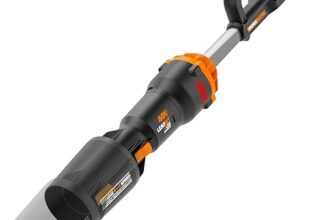
How to Make a Lawn Green: 6-Step Guide to Keeping It Sharp and Healthy
Keep It Sharp, Keep It Green: Why Edge Care Changes Everything
They learn how to make a lawn green by keeping blades sharp, since sharp blades transform turf. A single dull blade tears grass, inviting disease and waste. This six-step plan shows how they sharpen equipment, tune technique, and adopt low-impact habits for healthier, greener turf with less effort and water.
What They Need
Step 1 — Assess the Lawn Like a Pro
Could a five-minute inspection prevent a season of mistakes?Assess the lawn systematically. They should walk the property with purpose, treating the first pass like a diagnostic tour before any blade touches grass.
Look for these key issues and mark them as they go:
Take a quick soil test: collect 4–6 small samples from representative areas, mix them, and use a home test kit or send to the county extension for pH and nutrient analysis. Use colored flags, a simple sketch, or phone photos to create a trouble-spot map.
Example: if a backyard corner puddles and hosts moss, they should record it as a low, shaded area needing higher cutting height, aeration, and improved drainage rather than simply lowering the blade.
Step 2 — Sharpen and Balance the Blades
Why he should sharpen before every season (it often doubles cutting performance).Inspect blades for nicks and dull edges. Dull blades tear grass, causing frayed tips that brown, invite disease, and increase water stress. They should sharpen blades when visibly dull or about every 20–25 hours of residential use.
Follow this safe, repeatable process:
Replace blades if bent or too thin from repeated sharpening. If they hear vibration or see uneven cuts, professional sharpening preserves the factory angle and reduces wear, helping the mower cut cleaner and the lawn stay healthier.
Step 3 — Set Cutting Height for Health, Not Vanity
Cutting short is tempting—so why would they let it grow a little?Set cutting height according to grass type and season. Homeowners should follow the one‑third rule: never remove more than one‑third of the leaf blade in a single mow to avoid shock.
Measure before and after with a ruler: if grass is 3 inches, cut no lower than 2 inches. Taller grass develops deeper roots, crowds weeds, and tolerates drought better.
Follow these clear targets and steps:
Try a quick example: after a late‑June heatwave, a neighbor raised the deck 1 inch and saw less browning and faster recovery. Clear, measured adjustments reduce shock and improve long‑term density.
Step 4 — Mow Smart: Technique Over Speed
Is he mowing or mowing the lawn into submission?Mow often enough so they can follow the one‑third rule, removing no more than one‑third of the leaf blade per session.
Vary mowing patterns weekly to prevent wheel ruts and soil compaction; alternate direction (north–south one week, east–west the next).
Maintain a moderate ground speed for clean cuts—push the mower at a steady walking pace. For example, a neighbor who slowed from jogging speed to a calm walk noticed fewer ragged tips and quicker recovery.
Avoid mowing wet grass; stop if clumps form or the mower stalls, because wet clippings clump, stain, and spread disease.
Decide between mulching and bagging based on goals:
Overlap passes slightly (about 10–15%) for consistent height across the strip.
Inspect clippings after a pass—fine, evenly dispersed clippings indicate sharp blades and correct speed; long ribbons mean blades need sharpening or speed needs slowing.
Step 5 — Maintain the Machine: Routine Care That Pays
Treat the mower like a pet—care now avoids costly surgeries later.Maintain the machine with a simple checklist they can follow to extend life and ensure optimal cuts. Perform these tasks regularly and know what to look for.
Follow this checklist:
Step 6 — Monitor, Adjust, and Eco-Tune for a Greener Yard
Want a lawn that’s both lush and low-impact? Small tweaks win big.Monitor mowing outcomes and log results so they can see what works: note evenness, scalping, clumps, or disease after each session. For example, after a rainy stretch, they should record any thin patches to decide if overseeding is needed.
Track soil test results and watering efficiency quarterly. Adjust fertilization timing to match cool‑ or warm‑season cycles — for instance, favor early fall feeding for cool‑season lawns and summer peak feeding for warm‑season types — and choose slow‑release, low‑salt blends to reduce runoff and root burn.
Overseed thin areas in the appropriate season (fall for cool‑season, late spring for warm‑season) and remediate compaction with core aeration when the lawn shows water pooling or shallow roots. Spot‑treat pests and weeds after confirming ID rather than blanket‑spraying; treat a grub patch, not the whole lawn.
Eco-tips: return clippings as mulch, use native or drought-tolerant varieties, run irrigation early morning, and log actions to refine practices each year.
Consistency Keeps It Sharp and Green
They who apply regular assessment, sharp blades, correct height, smart mowing, machine care, and eco‑adjustments will enjoy a healthier lawn with less input; encourage them to try these six steps, track progress, and proudly share results today to inspire others.
FAQ
If you’re wondering how to green up your lawn quickly, start by clearing away leaves and debris so sunlight can reach the grass. Applying an iron-rich fertilizer gives turf a deep green color fast, while proper watering—deep and less frequent—helps roots grow stronger. Overseeding thin spots with a fast-germinating grass mix and mowing at a slightly higher setting also encourage a fuller, greener lawn in just a short time.
If you want to make your grass like a putting green, the secret is in consistent care and precision. Regular mowing at the right height helps to make grass greener and creates a smooth, dense surface. Deep but infrequent watering is essential to keep your lawn green while encouraging strong root growth. Using balanced fertilizers provides the nutrients needed to keep grass green throughout the season. Finally, aeration and overseeding are key steps in how to keep grass healthy, thick, and resilient—bringing you closer to that perfect putting-green look.
When asked what is the best thing to green your lawn with, most experts point to a combination of proper watering, fertilization, and mowing. For homeowners looking for practical tips on how to improve color fast, start with an iron-rich fertilizer and deep, consistent watering. This lawn how approach, paired with aeration and overseeding, strengthens roots and boosts overall health. By following these steps, you’ll be well on your way to growing lush green grass that stays vibrant through the season.








I’m new to lawn care and this guide was mercifully non-judgy.
Step 1 helped me actually look at the lawn instead of just blaming the grass.
Step 2 felt scary at first (sharp blades = scary), but the safety reminders made it manageable. I sharpened my first blade yesterday and it took forever lol — probably did something wrong 🤷♀️
Also loved the ‘Consistency Keeps It Sharp and Green’ ending — makes the whole plan feel doable, not like a weekend of doom.
Thanks for writing this!
This guide actually changed how I look at edging — who knew a sharp blade could save grass AND my time?
I followed Step 2 and rebalanced the blades last weekend. Big difference: less tearing, cleaner clippings, and my lawn looks… sharper (pun intended).
Step 3’s bit about cutting height for health, not vanity, really hit home. I had been mowing too short all summer.
Also, the mowing pattern tips in Step 4 are gold. No more stripes that scream “amateur.” 😅
One question: anyone tried the eco-tune suggestions from Step 6 on a mulching mower?
Totally agree — mulching plus sharp blades = free fertilizer. Try raising the height slightly if the clippings clump up.
Thanks for the tips everyone — will raise height a notch and try alternating directions this weekend!
Glad it helped, Maya! For mulching mowers, eco-tune usually means keeping blades sharp and checking the plug flow — sharper blades promote finer clippings which compost faster. You might not need many engine tweaks, but adjusting cutting height and mowing frequency helps a lot.
Nice pun. 😂 Also, have you tried alternating mowing directions? Helps avoid ruts and compaction.
I did the eco-tune and noticed less fuel usage. Not dramatic, but over a season it’s noticeable.
Love the checklist format — reminds me to actually do things instead of reading and forgetting.
One practical trick I use: mark the blade balance point with a dab of chalk so you can quickly check balance next time. Helps with consistency (Step 6).
Chalk sounds messy but smart. I use a permanent marker dot on the blade tip — stays through a couple of uses.
Nice tip, Emily — chalk marks are a clever low-tech solution to speed up checks.
Solid walkthrough. Short, practical, and not full of fluff. I especially liked the troubleshooting checklist in Step 5 — ‘Routine care that pays’ is not an understatement.
Quick note: the blade-balancing bit took me a minute to visualize. Maybe a photo or diagram would make Step 2 even clearer?
That would be amazing, Noah — if you’d like to submit photos, DM/email the editor and we’ll credit you.
Yep, a pic or short video would save a lot of guessing. I almost ruined a blade once trying to ‘balance’ it by feel.
Good suggestion, Noah — we’ll look into adding a simple diagram for balancing blades in the next revision. Thanks!
Thanks, admin. A video would be perfect. I can try taking photos for the guide if you want community submissions.
Short and sweet: following Step 3 saved my front lawn. Raised the deck and it’s greener now. 👍
Awesome, Owen — raising height a notch often prevents stress and encourages deeper roots. Nice win!
I appreciated the maintenance schedule, but the ‘weekly’ tasks seem optimistic. Between work and kids I barely get one mow in on weekends. The guide could use an ‘if you only have 1 hour/week’ minimalist plan. Also, the parts list for balancing felt like it assumed a full garage setup. Might be good to suggest low-cost alternatives or local shop options. 🙂
Sending blades to a local small engine shop is a great time-saver and often inexpensive. We’ll note approximate price ranges in the update.
Also, if you’re short on time, focus on raising deck height and edge once a month. Little wins add up.
Thanks for the callout, Carlos. That’s a fair point — we’ll add a ‘1-hour/week’ minimalist checklist and a low-cost tools subsection for balancing/sharpening. In the meantime: a quality hand-file and a clamp can do basic sharpening without a full bench setup.
Agree. I use a simple clamp and a file and take blades to a shop once a season. Works fine and saves time.
Good tip, Jenna. Didn’t think of sending blades out — cheaper than buying a grinder.
Step 4 = ‘Mow Smart: Technique Over Speed’ lol. Took me forever to learn that the lawn doesn’t get impressed by how fast you can run the mower.
My neighbor still rips through his yard like it’s a NASCAR track and then wonders why the grass looks shredded. 😂
Anyone else have that one friend who treats mowing like a competitive sport?
We hear you — technique beats speed every time. Slower passes reduce scalping and produce cleaner cuts, which heal quicker and reduce disease risk.
Glad it’s not just my neighborhood! I’ll send the guide to him and maybe he’ll retire from ‘mower Grand Prix’.
My uncle. He drove a riding mower like it was a tractor parade. Loud, fast, and leaves a mess.